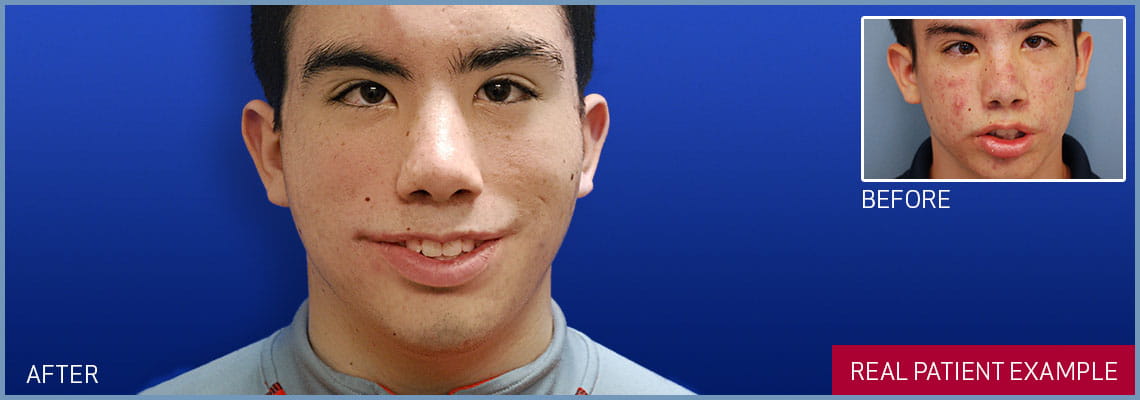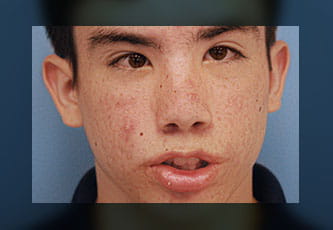Moebius Syndrome

Moebius Syndrome is a rare disorder effecting approximately 1 in 50,000 births. It is believed to have a genetic component; however, most cases are sporadic and potentially multi-factorial. The facial nerve is involved in all cases often producing an expressionless, mask-like face. Some individuals retain a limited amount of lower facial motion; however, attempts to smile usually produce a grimace.
The abducens nerve (CN VI) is the second most frequently involved cranial nerve (approximately 75%). Failure of this nerve to develop produces the inability to move one’s eyes outward (lateral gaze palsy). The hypoglossal nerve (CN XII) is affected in approximately 25% of cases and is associated with a small tongue and swallowing difficulties. Cranial nerves VIII, V, IV and III are usually spared. Other associated problems include club foot (approximately 30%), hand and upper limb deformities, Poland’s anomaly (approximately 15%) and high arched palate.
Technique
Effective surgical therapy is available for smile restoration. Smile surgery is often initiated at 5-6 years of age but can also be effective in teens and adults. The most frequently employed surgery involves the transfer of a small segment of muscle from the inner thigh to the cheek utilizing microsurgical techniques (free gracilis muscle flap). A branch of a local chewing nerve (masseter nerve) is then utilized to power the transplanted muscle segment.
Recovery
Approximately 5-6 months after surgery the muscle will start to contract. Clenching of the teeth will initially be required to create the smile; however, in the majority of patients adaptive changes in the brain will occur (cortical plasticity) allowing the individual to eventually smile without biting. In long-term follow up many individuals who have undergone smile surgery feel their facial motion is effortless. Recent incorporation of endoscopic surgery techniques are allowing smile surgery to be performed through limited incisions further improving the aesthetics of the procedure.
The abducens nerve (CN VI) is the second most frequently involved cranial nerve (approximately 75%). Failure of this nerve to develop produces the inability to move one’s eyes outward (lateral gaze palsy). The hypoglossal nerve (CN XII) is affected in approximately 25% of cases and is associated with a small tongue and swallowing difficulties. Cranial nerves VIII, V, IV and III are usually spared. Other associated problems include club foot (approximately 30%), hand and upper limb deformities, Poland’s anomaly (approximately 15%) and high arched palate.
Technique
Effective surgical therapy is available for smile restoration. Smile surgery is often initiated at 5-6 years of age but can also be effective in teens and adults. The most frequently employed surgery involves the transfer of a small segment of muscle from the inner thigh to the cheek utilizing microsurgical techniques (free gracilis muscle flap). A branch of a local chewing nerve (masseter nerve) is then utilized to power the transplanted muscle segment.
Recovery
Approximately 5-6 months after surgery the muscle will start to contract. Clenching of the teeth will initially be required to create the smile; however, in the majority of patients adaptive changes in the brain will occur (cortical plasticity) allowing the individual to eventually smile without biting. In long-term follow up many individuals who have undergone smile surgery feel their facial motion is effortless. Recent incorporation of endoscopic surgery techniques are allowing smile surgery to be performed through limited incisions further improving the aesthetics of the procedure.
FREE GRACILIS MUSCLE FLAP

Free gracilis muscle flap powered by the masseter motor nerve.
real patient case studies
Learn how facial paralysis surgery and functional restoration can help you.
